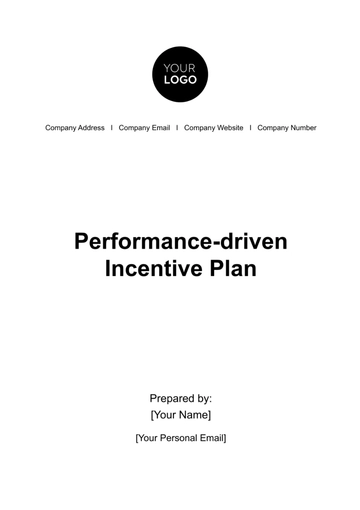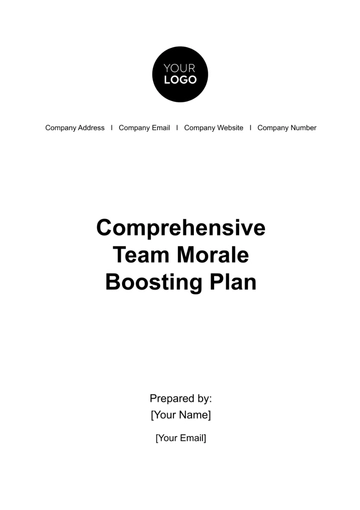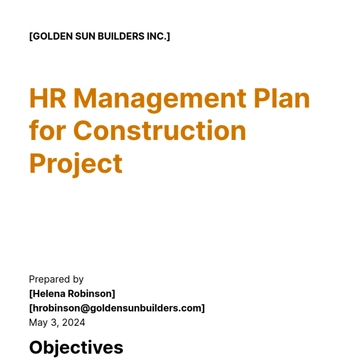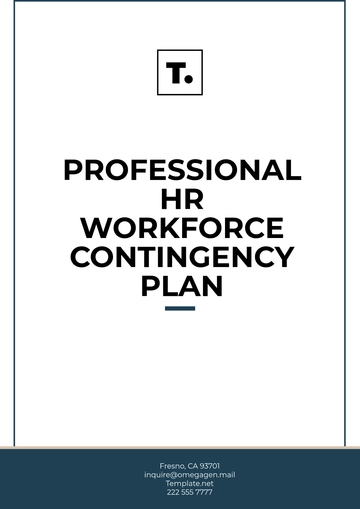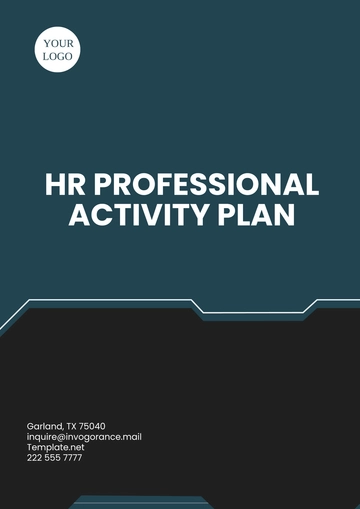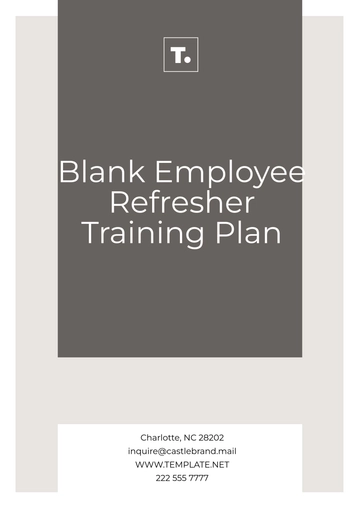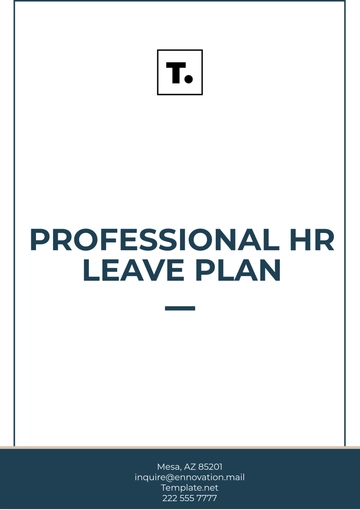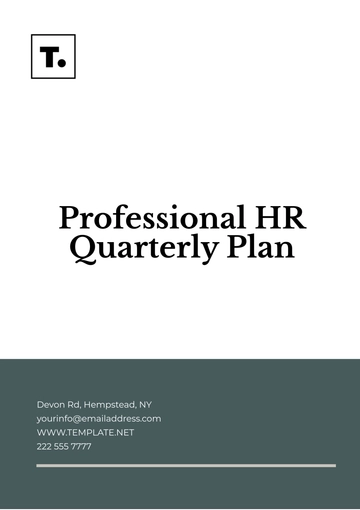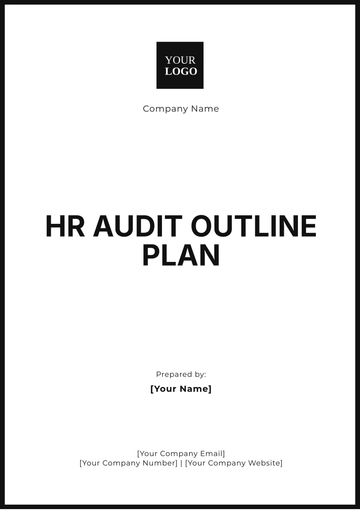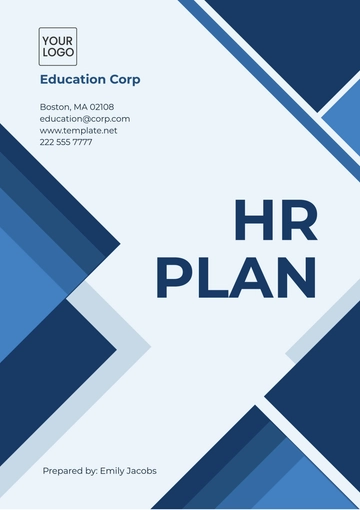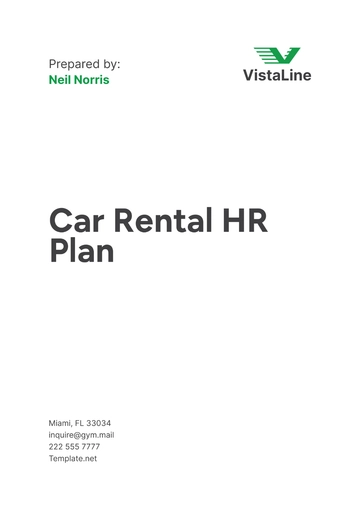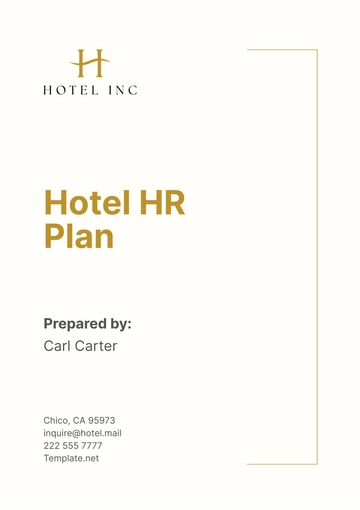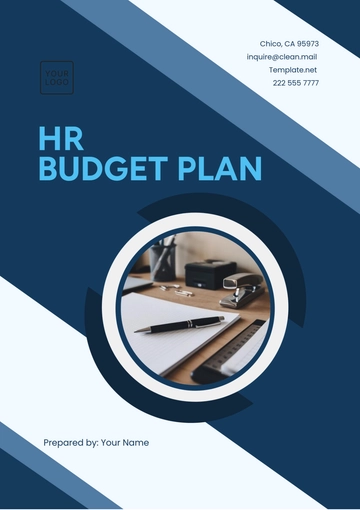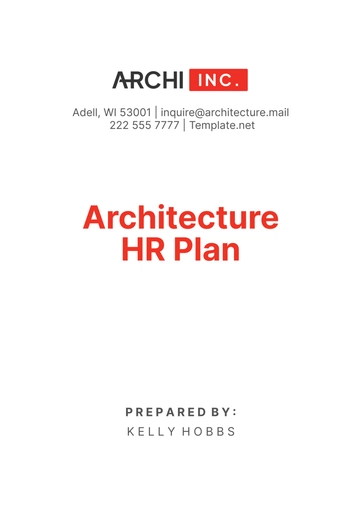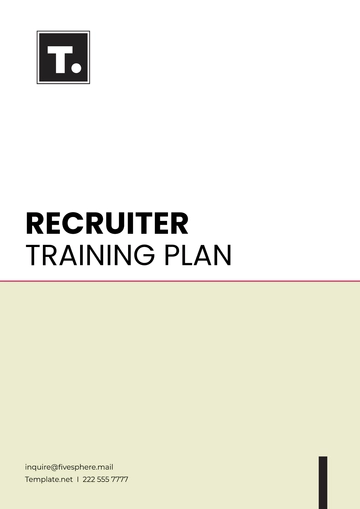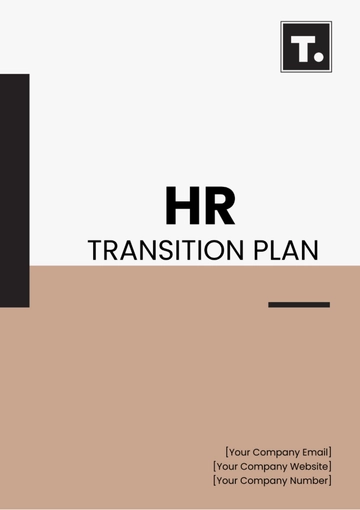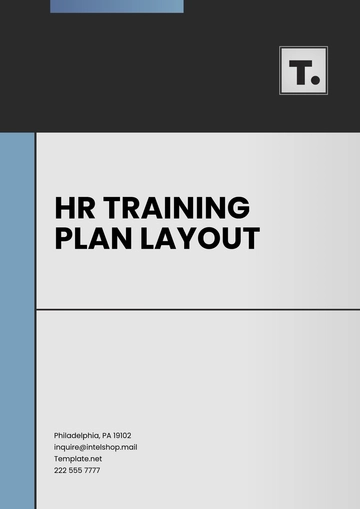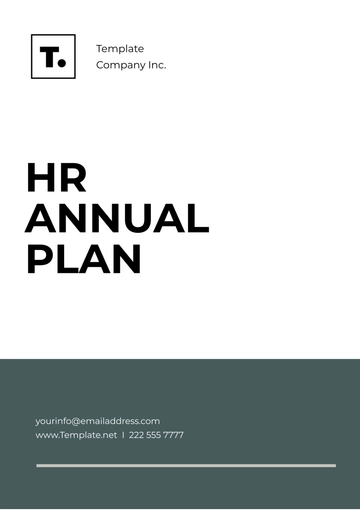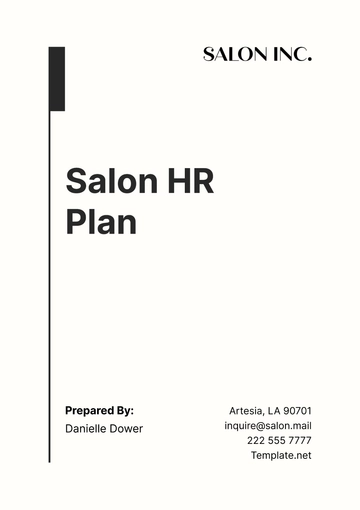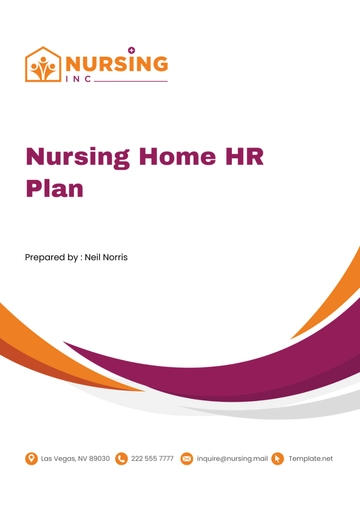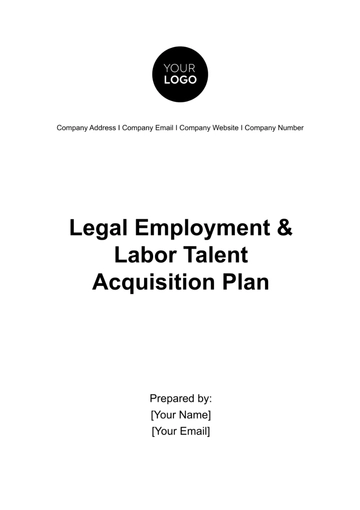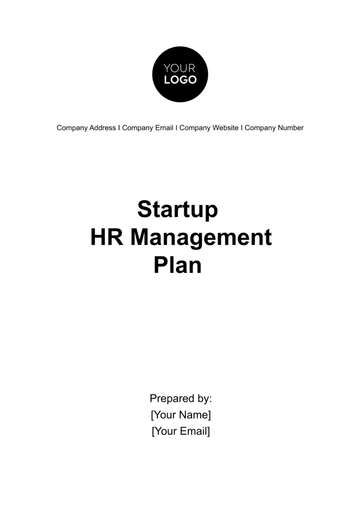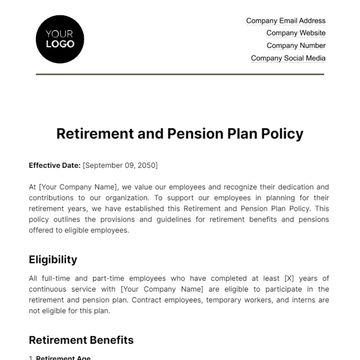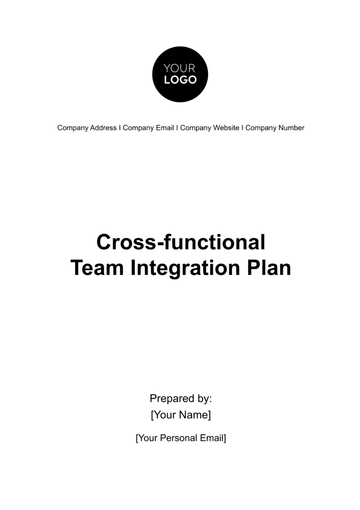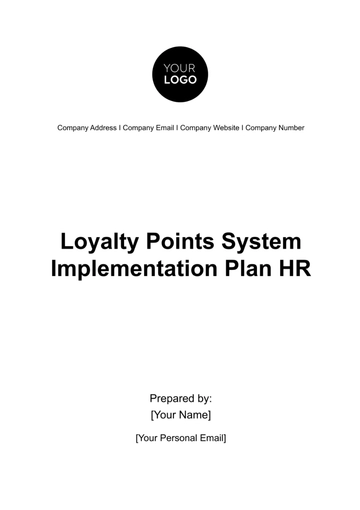Free HR Audit Outline Plan
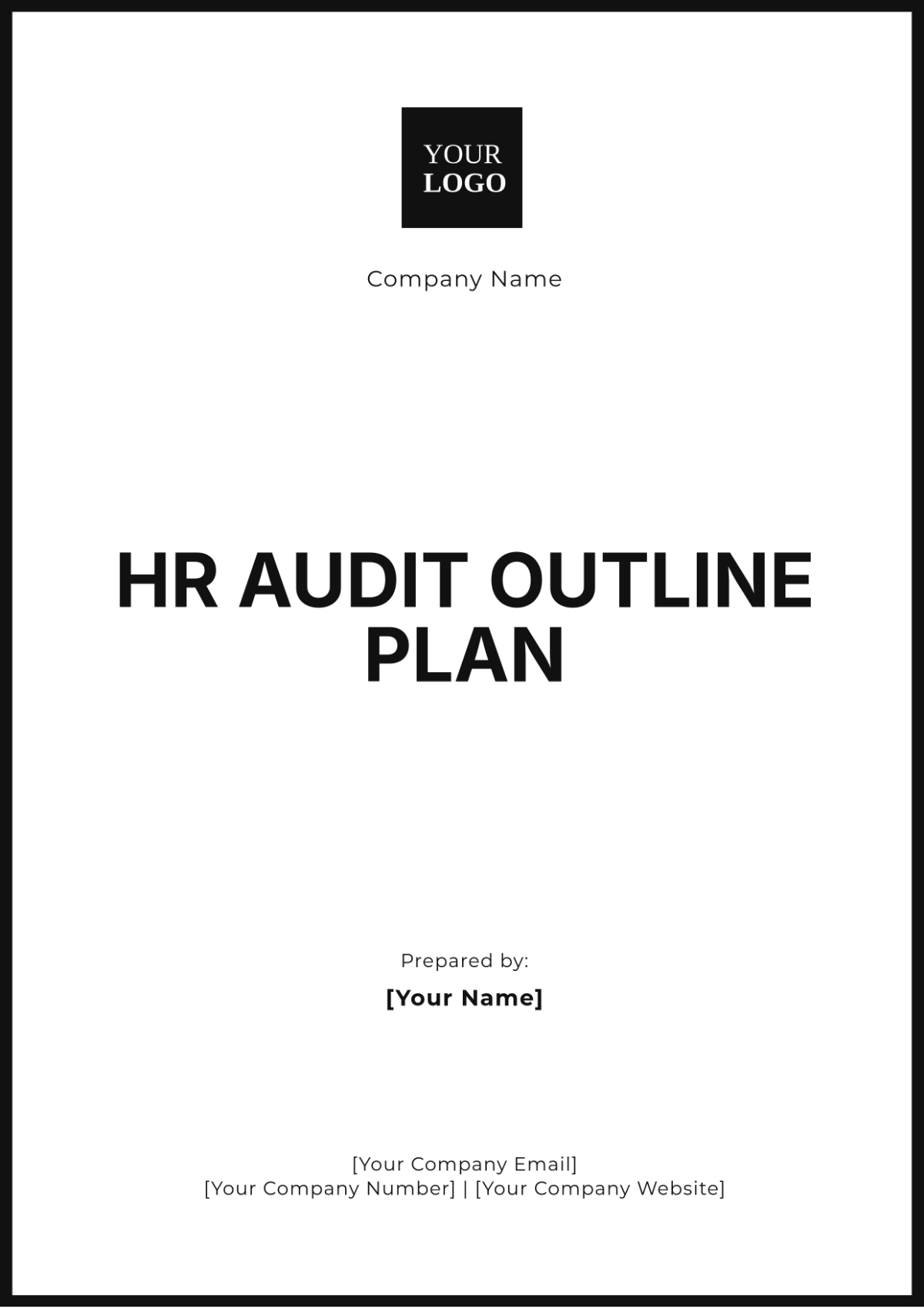
I. Introduction
A Human Resources (HR) audit is a comprehensive method to review current HR policies, procedures, documentation, and systems. This process identifies needs for improvement and enhancement within HR functions and ensures compliance with regulations and policies.
II. Objectives of the HR Audit
The main objectives of conducting an HR audit include:
Assessing compliance with employment laws and regulations
Identifying gaps in existing HR policies and practices
Enhancing HR management and performance
Identifying strategic opportunities for organizational improvement
A. Compliance
This section evaluates how well the organization's HR functions adhere to applicable laws and regulations such as labor laws, health, and safety requirements.
B. Efficiency and Effectiveness
Assessing whether the HR processes and practices are conducted efficiently and contribute to organizational goals.
C. Strategic Alignment
Evaluating how HR aligns with broader organizational strategy and how it contributes to the achievement of business objectives.
III. HR Audit Process
The HR audit process involves a series of steps to systematically review and evaluate the human resources functions.
A. Preparation
Define the scope and objectives of the audit
Assemble an audit team
Develop an audit plan and schedule
B. Data Collection
Gather relevant documentation and data
Conduct interviews and surveys with key stakeholders
C. Analysis
Compare data against benchmarks and standards
Identify areas of non-compliance and opportunities for improvement
D. Report Preparation
Summarize findings and provide recommendations
Prepare a final report to present to top management
E. Action Plan Development
Based on the audit findings, prepare an action plan with recommendations, prioritization, timelines, and responsibilities for implementing changes.
IV. Key Areas for HR Audit
These areas should be routinely reviewed during an HR audit for comprehensive coverage:
A. Recruitment and Selection
Aspect | Description |
|---|---|
Job Advertisements | Evaluate processes for job postings and advertisements for consistency and non-discrimination. |
Interview Procedures | Review interview guidelines to ensure fairness and compliance. |
B. Training and Development
Aspect | Description |
|---|---|
Training Programs | Analyze the effectiveness of training programs and their alignment with organizational goals. |
Skills Assessment | Examine the methods for assessing employee needs for further training or education. |
C. Performance Management
Review the performance appraisal systems to ensure fairness, objectivity, and alignment with business objectives.
D. Compensation and Benefits
Analyze compensation structures and benefit programs to evaluate competitiveness and compliance with legal standards.
V. Conclusion
An HR audit is a valuable tool for ensuring compliance, enhancing efficiency, and aligning HR practices with strategic goals. By following a structured approach, organizations can identify strengths and areas for development within their HR functions for optimized performance.
- 100% Customizable, free editor
- Access 1 Million+ Templates, photo’s & graphics
- Download or share as a template
- Click and replace photos, graphics, text, backgrounds
- Resize, crop, AI write & more
- Access advanced editor
Ensure thorough HR audits with Template.net's HR Audit Outline Plan Template. This editable and customizable plan helps organize your audit strategy effectively. Modify it according to your specific needs, fully editable in our Ai Editor Tool to enhance HR performance reviews and compliance.
You may also like
- Finance Plan
- Construction Plan
- Sales Plan
- Development Plan
- Career Plan
- Budget Plan
- HR Plan
- Education Plan
- Transition Plan
- Work Plan
- Training Plan
- Communication Plan
- Operation Plan
- Health And Safety Plan
- Strategy Plan
- Professional Development Plan
- Advertising Plan
- Risk Management Plan
- Restaurant Plan
- School Plan
- Nursing Home Patient Care Plan
- Nursing Care Plan
- Plan Event
- Startup Plan
- Social Media Plan
- Staffing Plan
- Annual Plan
- Content Plan
- Payment Plan
- Implementation Plan
- Hotel Plan
- Workout Plan
- Accounting Plan
- Campaign Plan
- Essay Plan
- 30 60 90 Day Plan
- Research Plan
- Recruitment Plan
- 90 Day Plan
- Quarterly Plan
- Emergency Plan
- 5 Year Plan
- Gym Plan
- Personal Plan
- IT and Software Plan
- Treatment Plan
- Real Estate Plan
- Law Firm Plan
- Healthcare Plan
- Improvement Plan
- Media Plan
- 5 Year Business Plan
- Learning Plan
- Marketing Campaign Plan
- Travel Agency Plan
- Cleaning Services Plan
- Interior Design Plan
- Performance Plan
- PR Plan
- Birth Plan
- Life Plan
- SEO Plan
- Disaster Recovery Plan
- Continuity Plan
- Launch Plan
- Legal Plan
- Behavior Plan
- Performance Improvement Plan
- Salon Plan
- Security Plan
- Security Management Plan
- Employee Development Plan
- Quality Plan
- Service Improvement Plan
- Growth Plan
- Incident Response Plan
- Basketball Plan
- Emergency Action Plan
- Product Launch Plan
- Spa Plan
- Employee Training Plan
- Data Analysis Plan
- Employee Action Plan
- Territory Plan
- Audit Plan
- Classroom Plan
- Activity Plan
- Parenting Plan
- Care Plan
- Project Execution Plan
- Exercise Plan
- Internship Plan
- Software Development Plan
- Continuous Improvement Plan
- Leave Plan
- 90 Day Sales Plan
- Advertising Agency Plan
- Employee Transition Plan
- Smart Action Plan
- Workplace Safety Plan
- Behavior Change Plan
- Contingency Plan
- Continuity of Operations Plan
- Health Plan
- Quality Control Plan
- Self Plan
- Sports Development Plan
- Change Management Plan
- Ecommerce Plan
- Personal Financial Plan
- Process Improvement Plan
- 30-60-90 Day Sales Plan
- Crisis Management Plan
- Engagement Plan
- Execution Plan
- Pandemic Plan
- Quality Assurance Plan
- Service Continuity Plan
- Agile Project Plan
- Fundraising Plan
- Job Transition Plan
- Asset Maintenance Plan
- Maintenance Plan
- Software Test Plan
- Staff Training and Development Plan
- 3 Year Plan
- Brand Activation Plan
- Release Plan
- Resource Plan
- Risk Mitigation Plan
- Teacher Plan
- 30 60 90 Day Plan for New Manager
- Food Safety Plan
- Food Truck Plan
- Hiring Plan
- Quality Management Plan
- Wellness Plan
- Behavior Intervention Plan
- Bonus Plan
- Investment Plan
- Maternity Leave Plan
- Pandemic Response Plan
- Succession Planning
- Coaching Plan
- Configuration Management Plan
- Remote Work Plan
- Self Care Plan
- Teaching Plan
- 100-Day Plan
- HACCP Plan
- Student Plan
- Sustainability Plan
- 30 60 90 Day Plan for Interview
- Access Plan
- Site Specific Safety Plan
